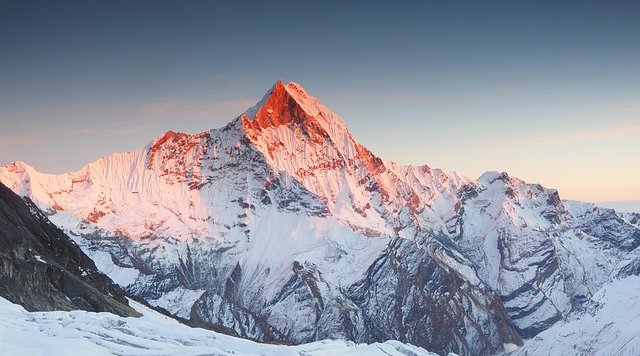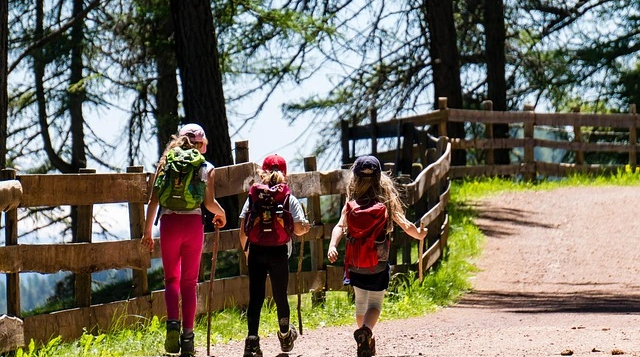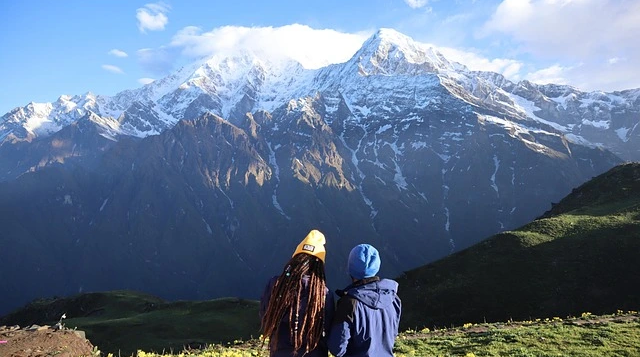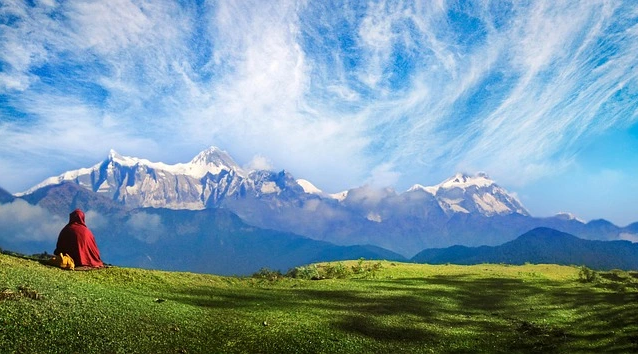Introduction
The majestic Himalayas have always held a special allure for adventurers and spiritual seekers alike. Mount Everest is the ultimate symbol of human endeavor and natural grandeur among its countless peaks. For Indian trekkers, the journey to Everest Base Camp (EBC) is more than just a physical challenge; it's a profound odyssey that resonates deeply with cultural heritage, offers seamless accessibility, and provides an unparalleled value-driven adventure. This comprehensive guide is tailored specifically for the Everest Base Camp trek for Indian enthusiasts, covering everything you need to know to plan and execute your dream Himalayan expedition in 2025-2026.
Why the Everest Base Camp Trek is a Dream for Indians
The increasing popularity of the EBC trek among Indians isn't accidental. A unique blend of factors makes this iconic journey particularly appealing to Indian citizens.
Cultural & Spiritual Connection to the Himalayas
For many Indians, the Himalayas are not merely mountains; they are revered as the "abode of gods" and a "realm of the sages," deeply embedded in their cultural and spiritual heritage. This profound connection transforms the
Everest Base Camp trek into a "highest spiritual destination" and a "pilgrimage". The region's landscape, adorned with Buddhist monasteries, prayer wheels, chortens, and stupas, further resonates with Indian spiritual sensibilities.
Seamless Accessibility: Visa-Free Travel & Proximity
One of the most significant advantages for Indian trekkers is the seamless accessibility to Nepal. Direct flights from major Indian cities like Delhi, Mumbai, and Kolkata can reach Kathmandu within a few hours, eliminating long-haul travel stress. A crucial facilitating factor is the absence of a visa requirement for Indian citizens to enter Nepal. Indian citizens can enter Nepal using a valid passport, an Indian citizenship card, or even an Aadhaar card. However, it's important to note that an Aadhaar (UID) card is not an acceptable travel document for travel to Nepal/Bhutan, and only original documents are valid. This low-barrier entry offers a unique opportunity for Indian nationals to experience an elite international trekking destination without the typical restrictions and red tape associated with international travel.
Value-Driven Adventure: Affordability & Cost-Effectiveness
The Everest Base Camp trek is considerably more affordable for Indian citizens compared to other international trekking destinations, and significantly cheaper than for Western travelers. Several factors contribute to this cost-effectiveness, including the absence of visa fees, shorter international flight distances, a preference for local food and tea house stays, and the option of shared porters and guides within Indian groups. Estimated costs can vary, starting from approximately INR 90,000 per person and potentially dropping to around INR 63,000 per person for larger groups.
Estimated EBC Trek Cost Breakdown for Indian Trekkers (INR)
1. Flights (India → Nepal & Lukla)
- Approximate Cost: ₹25,000 – ₹35,000
- Key Factors:
- Departure city in India (Delhi, Kolkata, Mumbai, etc.)
- Booking vs. last-minute fares
- Peak season (spring/autumn) vs. off-season
- Lukla Sector:
- Many flights now operate via Ramechhap (cheaper road transfer + flight)
- Weather delays can mean extra night of lodging
2. Permits (Sagarmatha National Park & Rural Municipality)
- Approximate Cost: ₹2,000 – ₹3,000
- Components:
- Sagarmatha National Park Permit: NPR 1,500 (approx. ₹1,125)
- Khumbu Pasang Lhamu Rural Municipality Permit: NPR 2,000 (approx. ₹1,500)
- Notes:
- Fees fixed by the Nepal government; bring a passport and two passport-size photos
- Paid at Monjo or check-post on the way to Namche
3. Accommodation (12–14 Nights Tea Houses)
- Approximate Cost: ₹12,000 – ₹20,000
- Per-Night Rate: ₹1,200 – ₹1,500 (double or sharing basis)
- Tips to Save:
- Share a room or stay in lower-altitude villages first
- Off-season discounts are often available (Jan–Feb, Jun–Aug)
4. Food & Drinks (12–14 Days)
- Approximate Cost: ₹20,000 – ₹30,000
- Typical Daily Spend: ₹1,500 – ₹2,500
- Meal Examples:
- Local (Dal Bhat): ₹300 – ₹500 per meal
- Western (Pasta, Pizza): ₹600 – ₹1,200 per meal
- Snacks & Beverages: Tea/coffee ₹100–₹200; bottled water ₹100–₹200
5. Guide & Porter Services
- Approximate Cost: ₹30,000 – ₹50,000
- Breakdown:
- Guide: ₹2,500 – ₹3,000 per day
- Porter: ₹1,500 – ₹2,000 per day (carries ~20–22 kg for two trekkers)
- Considerations:
- Group size (solo vs. group trek)
- Experience level of the guide
6. Travel Insurance
- Approximate Cost: ₹5,000 – ₹10,000
- Coverage Needs:
- High-altitude emergency evacuation (helicopter rescue)
- Medical treatment in Kathmandu
- Tip:
- Compare plans that specifically cover trekking up to 5,500 m+
7. Miscellaneous Expenses
- Approximate Cost: ₹7,000 – ₹13,000
- Common Items:
- Gear Rental: ₹2,000 – ₹5,000 (down jacket, sleeping bag, trekking poles)
- Charging Devices: NPR 300–600 per charge
- Wi-Fi: NPR 600–1,800 for the trek duration
- Hot Showers: NPR 300–500 per shower
- Tips & Gratitude: ₹200–300 per day for guide/porter
Total Estimated Cost
- Range: ₹92,500 – ₹147,500
- Notes:
- Base range for a standard 12–14 day trek
- Luxury lodges, additional acclimatization days, or private transfers will increase the total
- Always budget an extra 10–15% buffer for unforeseen expenses (weather delays, extra nights, medical needs)
Understanding EBC trek expenses from India and what's included in an Everest Base Camp trek package for Indians is crucial. Be aware of Everest Base Camp trek extra expenses hot showers, battery charging, and Wi-Fi, which often incur additional costs.
![]()
Prestige & Community: The 'Himalayan Trek' Badge of Honor
Within India, the EBC trek carries a "mythical reputation," often referred to as "the Himalayan Trek" and considered the "Ultimate Badge of Trekking Honor". Completing this arduous journey conveys a powerful message of being a "serious trekker". Furthermore, the presence of a "growing Indian Trekking Community in Nepal" contributes to a more comfortable and familiar experience for trekkers. Nepali trekking agencies are increasingly catering to this demographic by offering "custom Indian group departures with Hindi-speaking guides, Indian vegetarian food and cost-sensitive pricing". This fosters a sense of belonging and shared experience.
Planning Your Everest Base Camp Trek: An Indian Perspective
Effective planning is crucial for a successful EBC trek, and Indian trekkers seek detailed information on various logistical aspects.
Best Time to Trek
The optimal periods for trekking to EBC are typically Spring (March to May) and Autumn (September to November), offering the clearest skies, most manageable temperatures, and best visibility. Spring brings blooming rhododendrons and a vibrant base camp. Autumn offers stable weather and clear skies post-monsoon. However, these periods also coincide with the busiest seasons, with up to 500 individuals starting the trek daily. Winter (December to February) offers fewer crowds and can be more cost-effective, though colder. The monsoon/summer season (June to August) offers lush greenery but with rain and leeches. Consider the best time for the Everest Base Camp trek for Indians based on your preferences for weather, crowds, and cost. Understanding EBC trek weather by month is vital. If you prefer solitude, aim for the least crowded time EBC trek. For families, the best time to visit Everest Base Camp for Indian families might be during the shoulder seasons to balance weather and crowd levels.
Permits & Documentation
Indian citizens are exempt from Nepal visa requirements. However, specific permits are needed for the EBC trek. As of October 1, 2018, the Trekker's Information Management System (TIMS) card is no longer required for the Everest Base Camp trek. It has been replaced by two mandatory permits:
- Khumbu Pasang Lhamu Rural Municipality Entrance Permit:
- Cost for Indians: NPR 2,000 per person for the first four weeks.
- Where to Obtain: Upon arrival in Lukla, or in Monjo if trekking from Jiri/Salleri. No alternative offices in Kathmandu issue this permit.
- Sagarmatha National Park Entry Permit:
- Cost for Indians: NPR 1,500 per person (+13% VAT).
- Where to Obtain: Nepal Tourism Board Office in Kathmandu, or at the Sagarmatha National Park Entry Gate in Monjo. It's advisable to get this in Kathmandu during peak season to avoid queues.
For both permits, a passport copy is required. Payment must be in Nepali Rupees.
Essential Permits & Costs for Indian Trekkers
1. Khumbu Rural Municipality Permit
- Cost for Indians: NPR 2,000 (for first 4 weeks)
- Where to Obtain:
- Lukla (upon arrival)
- Monjo (if trekking from Jiri/Salleri)
- Required Documents:
- Notes:
- Mandatory for entry to the Khumbu region
- No Kathmandu‐based office—must purchase on-site
2. Sagarmatha National Park Entry Permit
- Cost for Indians: NPR 1,500 + 13% VAT
- Where to Obtain:
- Required Documents:
- Passport copy (or Aadhaar card + passport copy for Indian nationals)
- Notes:
- Required for entering the UNESCO World Heritage Site
- During peak season, advisable to secure in Kathmandu to avoid long queues
3. TIMS (Trekkers’ Information Management System) Card
- Cost for Indians: Not required for Everest Base Camp trek since October 2018
- Where to Obtain: N/A
- Required Documents: N/A
- Notes:
- No TIMS card needed for the EBC route as per regulations revised in late 2018
- Always double-check requirements if planning alternate or off-route treks
Tip for Indian Trekkers:
- Carry both physical and digital copies of all documents.
- Keep some extra passport-size photos handy—sometimes required for permit processing.
- If trekking during peak months (March–May, September–November), arrange permits in Kathmandu to save time on the trail.
14-Day EBC Trek Itinerary for Indian Trekkers
Day 1: Arrival in Kathmandu (1,400m)
Activities:
- Arrive at Tribhuvan International Airport
- Transfer to the hotel in Thamel
- Trek briefing and permit processing
- Gear check and last-minute shopping
Accommodation: Hotel in Thamel Meals: Welcome dinner with traditional Nepali cuisine
Day 2: Fly to Lukla & Trek to Phakding (2,652m)
Flight Duration: 35 minutes (early morning) Trekking Distance: 8 km Trekking Time: 3-4 hours Difficulty: Easy
Route Highlights:
- Spectacular mountain flight to Lukla's Tenzing-Hillary Airport
- First glimpse of Himalayan peaks
- Gentle descent through pine forests
- Cross multiple suspension bridges over the Dudh Koshi River
Accommodation: Tea house in Phakding Meals: Breakfast, Lunch, Dinner
Day 3: Phakding to Namche Bazaar (3,440m)
Trekking Distance: 11 km Trekking Time: 6-7 hours Difficulty: Moderate to Challenging
Route Highlights:
- Enter Sagarmatha National Park
- Cross-famous Hillary Suspension Bridge
- Steep ascent to Namche Bazaar
- First views of Everest (weather permitting)
- Arrive at the "Gateway to Everest"
Accommodation: Tea house in Namche Bazaar Meals: Breakfast, Lunch, Dinner
Day 4: Acclimatization Day in Namche Bazaar
Activities:
- Rest day for altitude acclimatization
- Hike to Everest View Hotel (3,880m) - 2-3 hours
- Visit the Sherpa Culture Museum
- Explore Namche's Saturday market
- Optional visit to Khumjung village
Accommodation: Tea house in Namche Bazaar Meals: Breakfast, Lunch, Dinner
Day 5: Namche Bazaar to Tengboche (3,867m)
Trekking Distance: 10 km Trekking Time: 5-6 hours Difficulty: Moderate
Route Highlights:
- Spectacular views of Everest, Lhotse, and Ama Dablam
- Descend to Dudh Koshi River
- Climb through rhododendron forests
- Visit the famous Tengboche Monastery
- Attend evening prayer ceremony (if timing permits)
Accommodation: Tea house in Tengboche Meals: Breakfast, Lunch, Dinner
Day 6: Tengboche to Dingboche (4,410m)
Trekking Distance: 9 km Trekking Time: 5-6 hours Difficulty: Moderate
Route Highlights:
- Descend through birch and juniper forests
- Cross Imja River
- Gradual ascent to Dingboche
- Enter alpine zone with sparse vegetation
- Panoramic views of Island Peak and Lhotse
Accommodation: Tea house in Dingboche Meals: Breakfast, Lunch, Dinner
Day 7: Acclimatization Day in Dingboche
Activities:
- Rest day for altitude adjustment
- Hike to Nagarjun Hill (5,100m) - 3-4 hours
- Spectacular 360-degree mountain views
- Optional visit to Chukhung village
- Rest and hydration
Accommodation: Tea house in Dingboche Meals: Breakfast, Lunch, Dinner
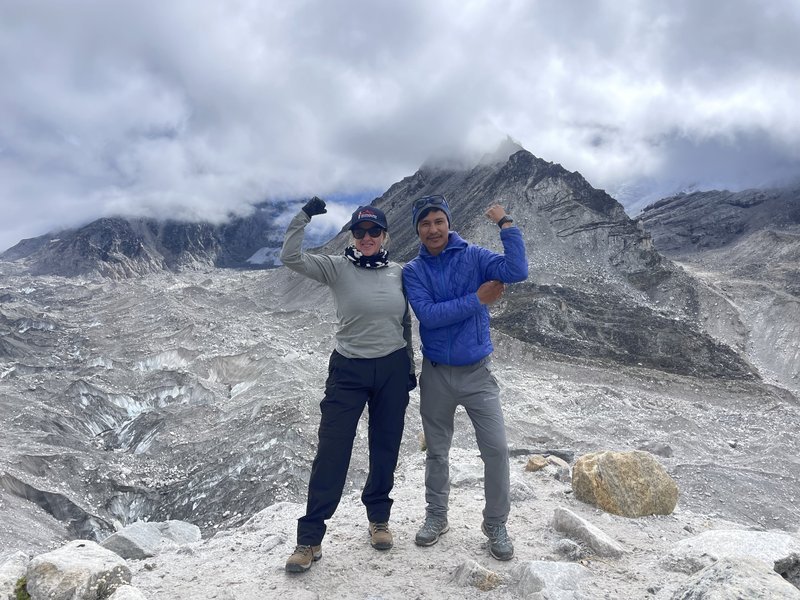
Day 8: Dingboche to Lobuche (4,940m)
Trekking Distance: 7 km Trekking Time: 5-6 hours Difficulty: Challenging
Route Highlights:
- Pass through Dugla (Thukla)
- Climb to memorial site for climbers
- Rocky moraine terrain
- Views of Khumbu Glacier
- Challenging altitude gain
Accommodation: Tea house in Lobuche Meals: Breakfast, Lunch, Dinner
Day 9: Lobuche to Everest Base Camp (5,364m) via Gorak Shep (5,164m)
Trekking Distance: 13 km total Trekking Time: 8-9 hours Difficulty: Very Challenging
Route Highlights:
- Early morning start to Gorak Shep
- Drop backpacks and continue to EBC
- Walk on Khumbu Glacier
- Reach Everest Base Camp - the ultimate destination
- Celebration at base camp
- Return to Gorak Shep for overnight
Accommodation: Tea house in Gorak Shep Meals: Breakfast, Lunch, Dinner
Day 10: Gorak Shep to Kala Patthar (5,545m) & Pheriche (4,371m)
Trekking Time: 7-8 hours total Difficulty: Very Challenging
Route Highlights:
- Pre-dawn hike to Kala Patthar viewpoint
- Best sunrise views of Everest
- 360-degree panoramic mountain views
- Descend to Pheriche via Lobuche
- Significant altitude loss for recovery
Accommodation: Tea house in Pheriche Meals: Breakfast, Lunch, Dinner
Day 11: Pheriche to Namche Bazaar (3,440m)
Trekking Distance: 14 km Trekking Time: 6-7 hours Difficulty: Moderate
Route Highlights:
- Long descent day
- Pass through Tengboche
- Quick monastery visit
- Retrace the route through rhododendron forests
- Arrive in Namche for the celebration
Accommodation: Tea house in Namche Bazaar Meals: Breakfast, Lunch, Dinner
Day 12: Namche Bazaar to Lukla (2,860m)
Trekking Distance: 19 km Trekking Time: 7-8 hours Difficulty: Moderate
Route Highlights:
- Final day of trekking
- Descend through familiar villages
- Cross suspension bridges
- Celebrate trek completion in Lukla
- Farewell dinner with the trekking team
Accommodation: Tea house in Lukla Meals: Breakfast, Lunch, Dinner
Day 13: Fly to Kathmandu
Flight Duration: 35 minutes Activities:
- Morning flight to Kathmandu (weather dependent)
- Transfer to the hotel
- Rest and relaxation
- Optional spa or massage
- Souvenir shopping in Thamel
- Celebration dinner
Accommodation: Hotel in Kathmandu Meals: Breakfast, Farewell dinner
Day 14: Departure
Activities:
- Final souvenir shopping
- Transfer to the international airport
- Departure to India
Meals: Breakfast
Accommodation & Food Preferences
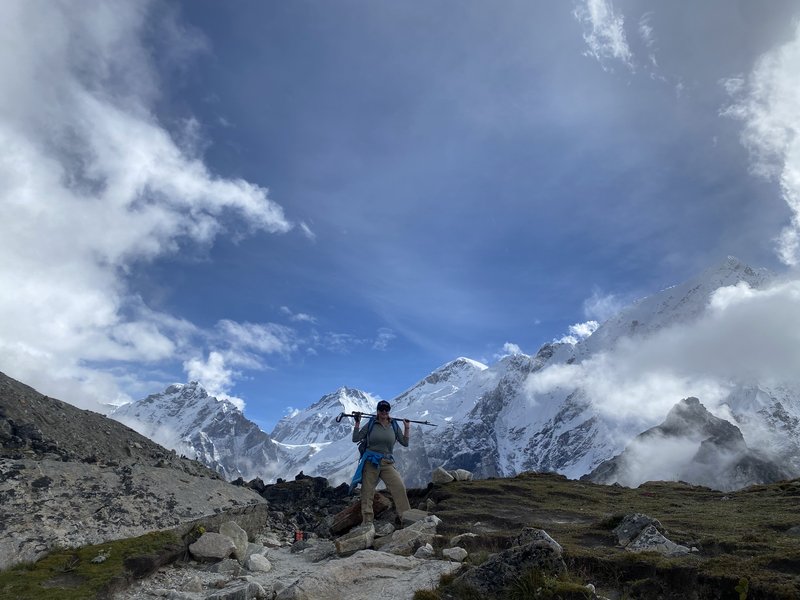
Accommodation along the EBC trek is primarily in teahouses or lodges, offering basic but comfortable rooms, often with shared bathrooms. In lower elevations like Lukla and Namche Bazaar, you might find more decent lodges with private rooms, attached bathrooms, and electric blankets. The
Everest Base Camp trek accommodation for Indian trekkers is generally comfortable.
For food, the Nepalese tourism ecosystem is adapting to better serve Indian trekkers, offering "custom Indian group departures with Hindi-speaking guides, Indian vegetarian food and cost-sensitive pricing". Teahouses and lodges along the trekking route commonly serve "Indian-style meals and snacks".
Dal Bhat EBC trek is a staple, and a wide array of vegetarian and vegan options are available, including dishes like vegetable curry, momos, fried rice, and paratha. This makes Indian vegetarian food an Everest Base Camp trek easily accessible. You can also find Sherpa food at Everest Base Camp, like Tsampa and Riki Kur.
Connectivity on the Trail
Staying connected on the Everest Base Camp trek is possible, though coverage can be patchy at higher altitudes. Mobile networks (Ncell and NTC) are generally the cheapest option, working in most places up to Lobuche. NTC often has better coverage at lower altitudes, while Ncell performs better at higher elevations. You can buy a local SIM card at Kathmandu airport or Lukla. For the internet,
Everest Link Wi-Fi cards are available for purchase at most teahouses, costing around $20 for 10 GB or 30 for 20 GB. Teahouses also offer their own satellite Wi−Fi for a fee(US5-10 per device), though speed varies. Free Wi-Fi is rare and often slow. For emergencies,
Satellite phone rental Nepal EBC is an option.
Preparation & Safety for Indian Trekkers
Comprehensive preparation and a strong focus on safety are paramount for a successful EBC trek, particularly given the high-altitude environment.
Physical Fitness & Training Regimen
The EBC trek physical preparation for Indian trekkers is crucial. While you don't need to be an elite athlete, good physical condition is essential. Start training 8-12 weeks in advance. Focus on:
- Cardiovascular Endurance: Activities like brisk walking, jogging, cycling, and swimming for 30-60 minutes, 3-5 times a week, gradually increasing intensity and duration. This is key for adapting to lower oxygen levels.
- Strength Training: Focus on legs, core, and upper body with exercises like squats, lunges, step-ups, planks, push-ups, and rows. This helps with carrying a backpack and navigating rugged terrain.
- Hiking Practice: Simulate trekking conditions by doing longer hikes (2-6 hours) with a loaded backpack, incorporating inclines and varied terrain.2
- Flexibility & Balance: Include daily stretching and yoga to prevent injuries and improve agility.
For the EBC trek, fitness requirements for beginners Indian, aim to be able to jog/run 5 km in 25-30 minutes, walk continuously for 10 km on a slight incline, climb 30 floors without a break, and perform basic strength exercises.
Altitude Sickness: Symptoms, Prevention, and Treatment
Altitude sickness (Acute Mountain Sickness or AMS) can affect anyone above 2,400 meters, regardless of fitness.
Altitude sickness symptoms at Everest Base Camp include headache, tiredness, disturbed sleep, loss of appetite/nausea, shortness of breath, and dizziness. Severe symptoms (persistent vomiting, inability to walk straight, extreme breathlessness, confusion) indicate life-threatening conditions like HAPE or HACE, requiring immediate descent.
How to prevent altitude sickness, the EBC trek is crucial:
- Gradual Acclimatization: Ascend slowly, allowing your body to adjust. Don't skip the rest days at Namche Bazaar and Dingboche. Follow the "climb high, sleep low" principle.
- Hydration: Drink 3-4 liters of water daily; avoid alcohol and caffeine.
- Pacing: Trek at a slow, steady pace and avoid over-exertion. Listen to your body.
- Medication: Acetazolamide (Diamox) can be used as a preventive measure, but only under medical supervision.
Essential Gear & Packing List
A comprehensive Everest Base Camp trek packing list for Indian trekkers is vital. Key items include:
- Warm Clothing: 2-3 moisture-wicking thermal sets, fleece jackets, warm trekking pants, waterproof pants, fleece hat/beanie, neck gaiter, warm mittens.
- Outer Layer: A good quality down jacket EBC trek rental is highly recommended (can be rented in Kathmandu for ~NPR 150/day). Also, a waterproof/windproof jacket.
- Footwear: Sturdy, well-fitted, waterproof hiking boots with ankle support are crucial. Break them in before the trek to avoid blisters. Avoid renting boots. Also, light sandals/slippers for teahouses.
- Other Essentials: A reliable backpack (40- 50L, can be rented for ~NPR 200/day), sleeping bag rated for -10°C or lower (can be rented for ~NPR 150/day), headlamp,
water purification tablets EBC, and a
first aid kit for EBC trek. Trekking poles are invaluable.
You can rent much of the Everest Base Camp trek gear rental Kathmandu. Shops in Thamel offer a wide range of equipment.
Guide & Porter Requirements
While some trekkers have completed the journey without a guide or porter, the Nepal government has implemented policies (effective April 1, 2023) generally mandating a licensed guide or porter-guide for trekking in Nepal's national parks. Although there's an exception for the Everest region where individuals might still trek solo under specific rules, significant risks are associated with solo trekking, including reports of missing persons. Therefore, while you can search for "
Everest Base Camp trek without a guide Indian," it's strongly recommended to consider hiring a guide for EBC trek safety and support. This addresses the question:"
Do Indian Trekkers Need a Guide and Porter During EBC Trek?"
Emergency Evacuation & Travel Insurance
Travel insurance is absolutely essential for the EBC trek, especially one that covers high-altitude trekking and helicopter evacuation. Helicopter evacuations in Nepal can be very expensive, ranging from $5,000–$10,000 USD.
For Everest Base Camp trek emergency evacuation insurance India, providers like Bajaj Allianz travel insurance EBC (covers up to 6,000m) and ICICI Lombard travel insurance EBC (covers up to 5,500m) offer suitable policies for Indian travelers. Ensure your policy covers the maximum altitude of your trek (EBC is 5,364m).
Safety Tips for Indian Trekkers
Beyond physical preparation and insurance, general safety practices are crucial for a smooth trek:
- Listen to Your Body: Pay attention to any signs of discomfort or altitude sickness and rest when needed.
- Stay Hydrated: Drink plenty of water throughout the day.
- Follow Guides & Trail Markings: Especially in unfamiliar or challenging terrain.
- Pack Smart & Light: Every extra kilogram feels heavier at altitude.
- Inform Contacts: Let someone reliable know your itinerary and emergency contacts.
- Respect Local Culture: Be friendly and respectful of the Sherpa community and the environment.
For EBC trek safety for solo female Indian trekkers, additional tips include registering your trek with a trusted contact, considering a local guide, and carrying a satellite phone for emergencies.
Exploring Beyond: Alternative Treks
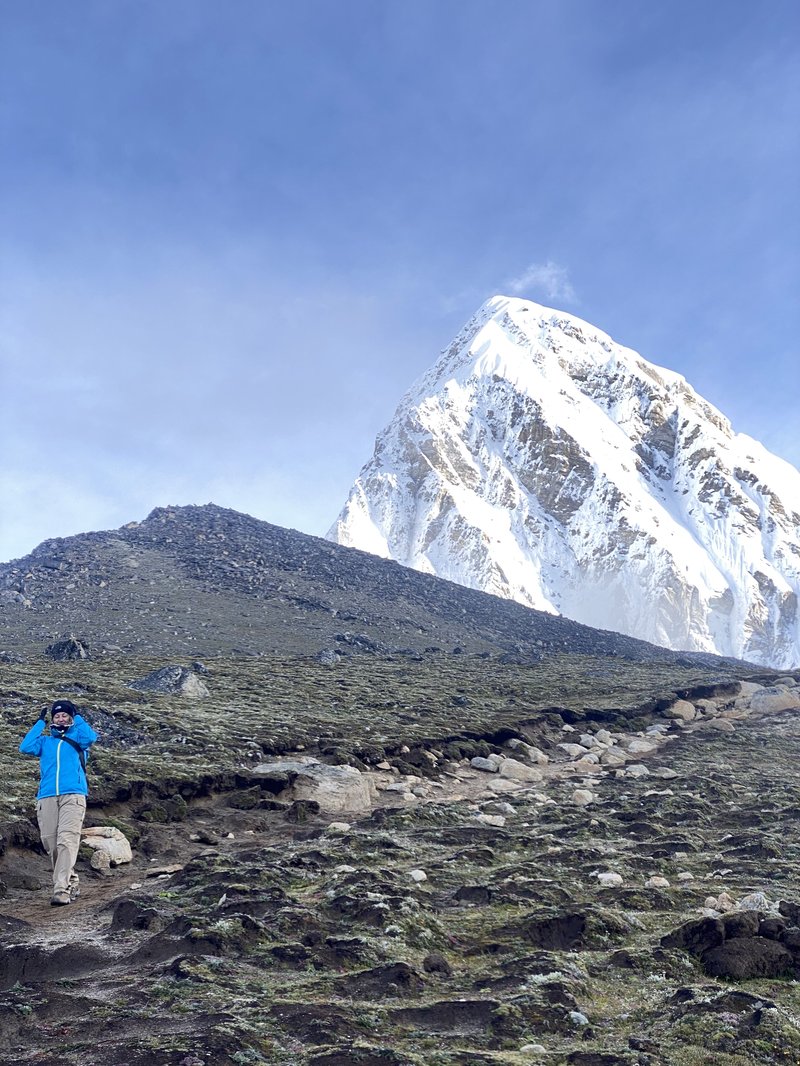
While the Everest Base Camp trek is iconic, the Everest region offers other incredible experiences. For those seeking an Everest Base Camp trek alternative routes for Indian trekkers, especially those looking for less crowded paths, consider:
- Gokyo Lakes Trek: This trek takes you through the pristine Gokyo Valley, offering stunning views of six glacial lakes and Gokyo Ri (5,357m), with panoramic views of Everest, Lhotse, Makalu, and Cho Oyu. It's a great alternative for fewer crowds.
- Three Passes Trek: A more challenging option combining Kongma La Pass, Cho La Pass, and Renjo La Pass, offering remote exploration and breathtaking vistas.
- Ama Dablam Base Camp Trek: Offers a quieter, more intimate experience of the Everest region without the crowds of EBC.
For a comparison, the Everest Base Camp trek vs Annapurna Base Camp for Indian trekkers is a common query. The Annapurna Base Camp (ABC) trek is generally considered easier, shorter (7-12 days), and reaches a lower altitude (4,130m), making it more beginner-friendly with diverse landscapes. The EBC trek is longer (10-14 days), reaches a higher altitude (5,364m), and involves more challenging terrain. While both are challenging, EBC is often regarded as more difficult due to more time spent at higher altitudes.
Conclusion
The Everest Base Camp trek for Indian adventurers is a truly unique and fulfilling experience. Its blend of cultural significance, ease of access, affordability, and the sheer prestige of reaching the foot of the world's highest peak makes it an unparalleled journey. By understanding the specific requirements, preparing diligently, and embracing the spirit of the Himalayas, Indian trekkers can embark on an unforgettable adventure that will leave them with a lifetime of cherished memories and a profound sense of accomplishment.
Please feel free to contact us at [email protected]
or WhatsApp us at +9779801127073.
Book now for your unforgettable
Everest Base Camp Journey with Himalayanhero Adventures
Frequently Asked Questions (FAQs)
Q1: Do Indian citizens need a visa for the Everest Base Camp trek?
No, Indian citizens do not require a visa to enter Nepal.1 You can enter Nepal using a valid Indian passport, an Indian citizenship card, or an Election ID card issued by the Election Commission of India.However, an Aadhaar card is not an acceptable travel document for entry into Nepal.
Q2: What are the mandatory permits for the Everest Base Camp trek for Indians, and where can I get them?
Indian citizens need two mandatory permits for the EBC trek: the Khumbu Pasang Lhamu Rural Municipality Entrance Permit (NPR 2,000) and the Sagarmatha National Park Entry Permit (NPR 1,500 + 13% VAT). The Khumbu permit is obtained upon arrival in Lukla or Monjo, while the Sagarmatha permit can be acquired at the Nepal Tourism Board Office in Kathmandu or the park entry gate in Monjo.
Q3: What is the estimated cost of the Everest Base Camp trek for an Indian?
The estimated total cost for a standard 12-14 day Everest Base Camp trek for Indian trekkers typically ranges from INR 92,500 to INR 147,500 per person. This includes flights, permits, accommodation, food, guide/porter services, and miscellaneous expenses. Group sizes can significantly reduce the per-person cost.
Q4: Is the Everest Base Camp trek suitable for beginners from India, and how long does it take?
Yes, the Everest Base Camp trek for beginners Indian is achievable with proper physical and mental preparation. A standard itinerary typically takes 12-14 days, including crucial acclimatization days. For beginners, a longer 16-day itinerary is often recommended to allow for a more relaxed pace and better acclimatization.
Q5: What kind of food and accommodation can Indian trekkers expect on the EBC trail?
On the EBC trek, Indian trekkers can expect to stay in basic but comfortable teahouses or lodges. For food, many teahouses cater to Indian tastes, offering a variety of Indian vegetarian dishes like Dal Bhat, vegetable curry, momos, fried rice, and paratha. Dal Bhat is a staple and often comes with unlimited servings.





